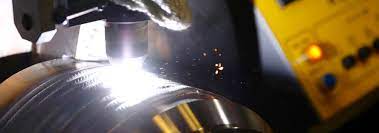Plasma Arc Welding: Definition, Construction, Working Principle, Applications, Advantages, ands Disadvantages
Plasma Arc Welding is a fluid state welding Radial Bearings process. Here in this paper, you will become familiar with the Definition of Plasma Arc Welding, Components and Working Principle of the Machine, alongside the Applications, Advantages, and Disadvantages of this Welding. So presently how about we get everything rolling with the meaning of PAW!
What is Plasma Arc Welding?
Plasma Arc
Welding (PAW) is a fluid state welding Radial
Bearings process in which the metal to metal joint structures in a liquid
state with the assistance of hot ionized gases known as Plasma. These hot
ionized gases used to warm the work plates, and the joint is made because of
combination.
The plasma curve
welding process required a powerful DC supply to create the electric sparkle in
the middle of the tungsten cathode and welding plates. This PTA Over Tile welding can weld at a low
2 amp and the greatest current which it can deal with is around 300 amp. It
needs around 80 volts for legitimate working. PAW lights are water-cooled on
the grounds that the bend is contained inside the light which creates high
hotness, so a water coat is given external the light.
This instrument
is utilized to cool the welding light by the consistent progression of water
outside of the welding light.
Tungsten Electrode:
In this machine,
we utilize a no-consumable tungsten anode. As we probably are aware tungsten
can withstand extremely high temperature.
Protecting Gas:
In this welding PTA
Over Tile system, we utilize two inactive gases. We want to keep a low
strain to stay away from the disturbance while welding because of this
low-pressure gases welding safeguard is framed week by week, that is the reason
we want to charge one more idle gas through the external piece of the welding
power in high stream rate, to make the weld safeguard maintainable. The latent gases
which are utilized in this interaction can helium, argon, and furthermore
hydrogen according to the need, and it is thoroughly relies upon the
temperature.
It is an ionized
hot gas made out of almost similar quantities of electrons and particles. It has
adequate energy to liberate electrons from particles, iotas, and electron to
synchronize. It is the primary energy wellspring of this welding.
In Plasma welding
there is no filler material is utilized. Assuming the filler material is
utilized, then, at that point, it is straightforwardly taken care of into the
weld zone. This is a bend welding process, a concentrated plasma curve is
created with the assistance of high-recurrence unit of the machine and
coordinated towards the weld region.

Comments
Post a Comment